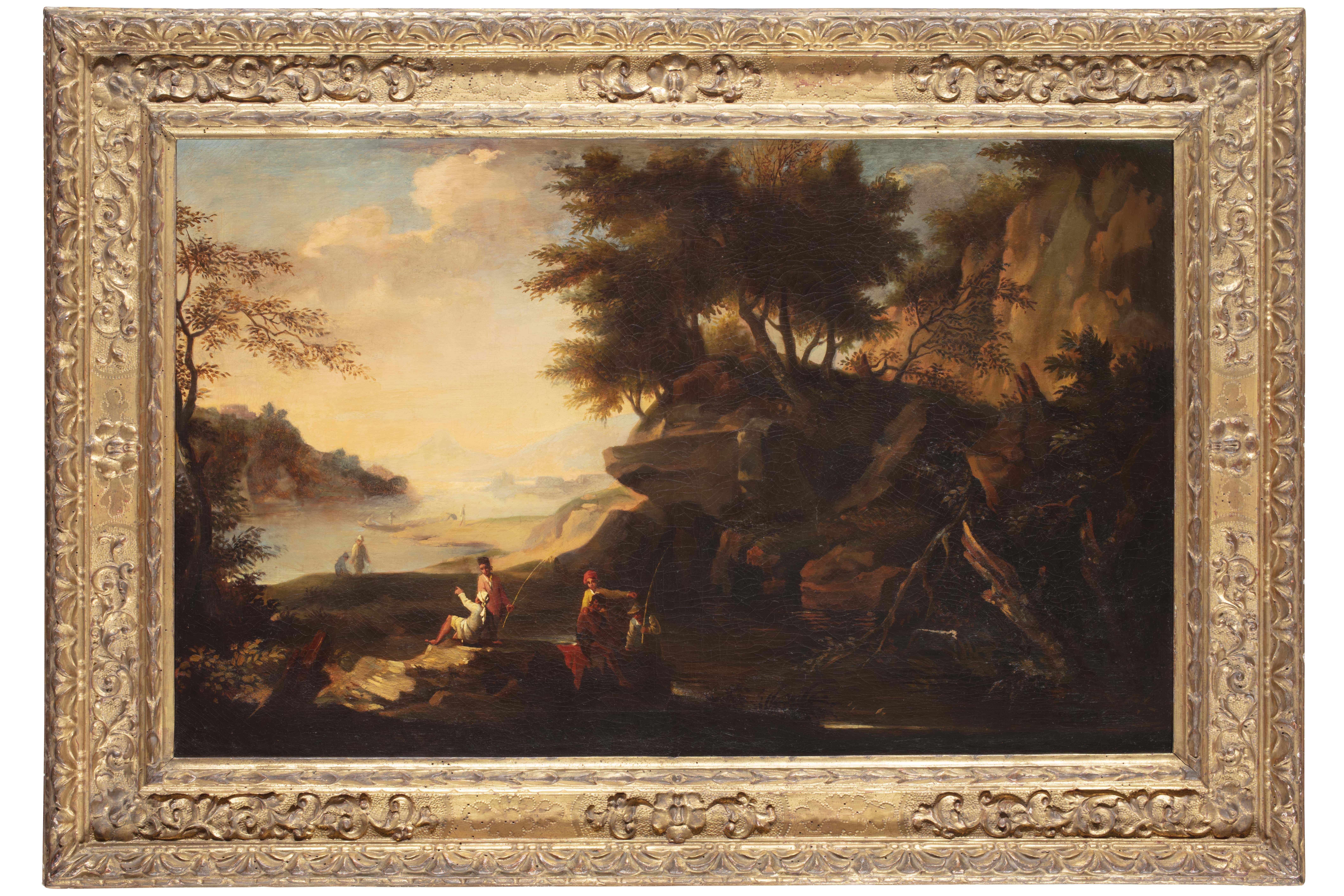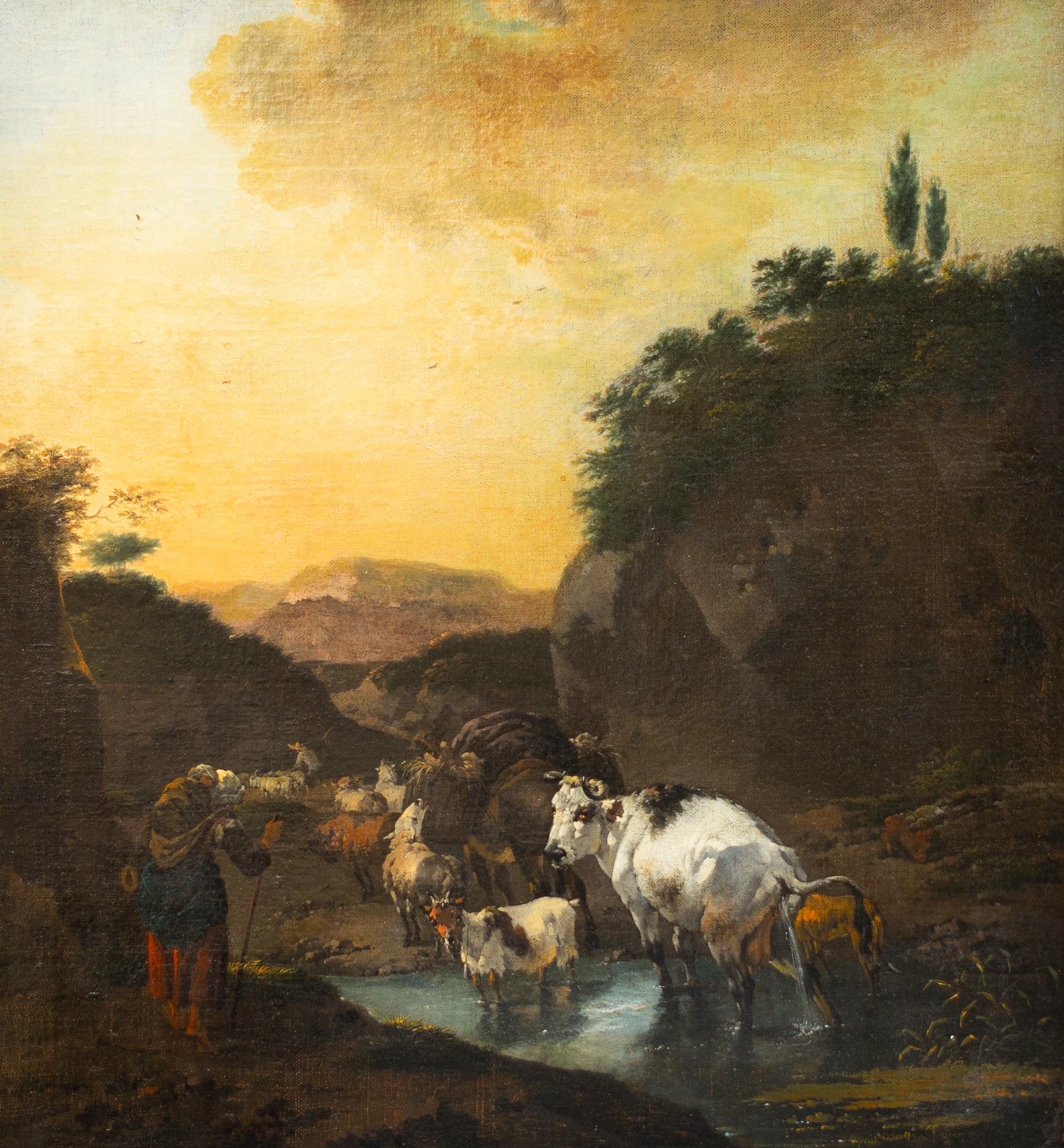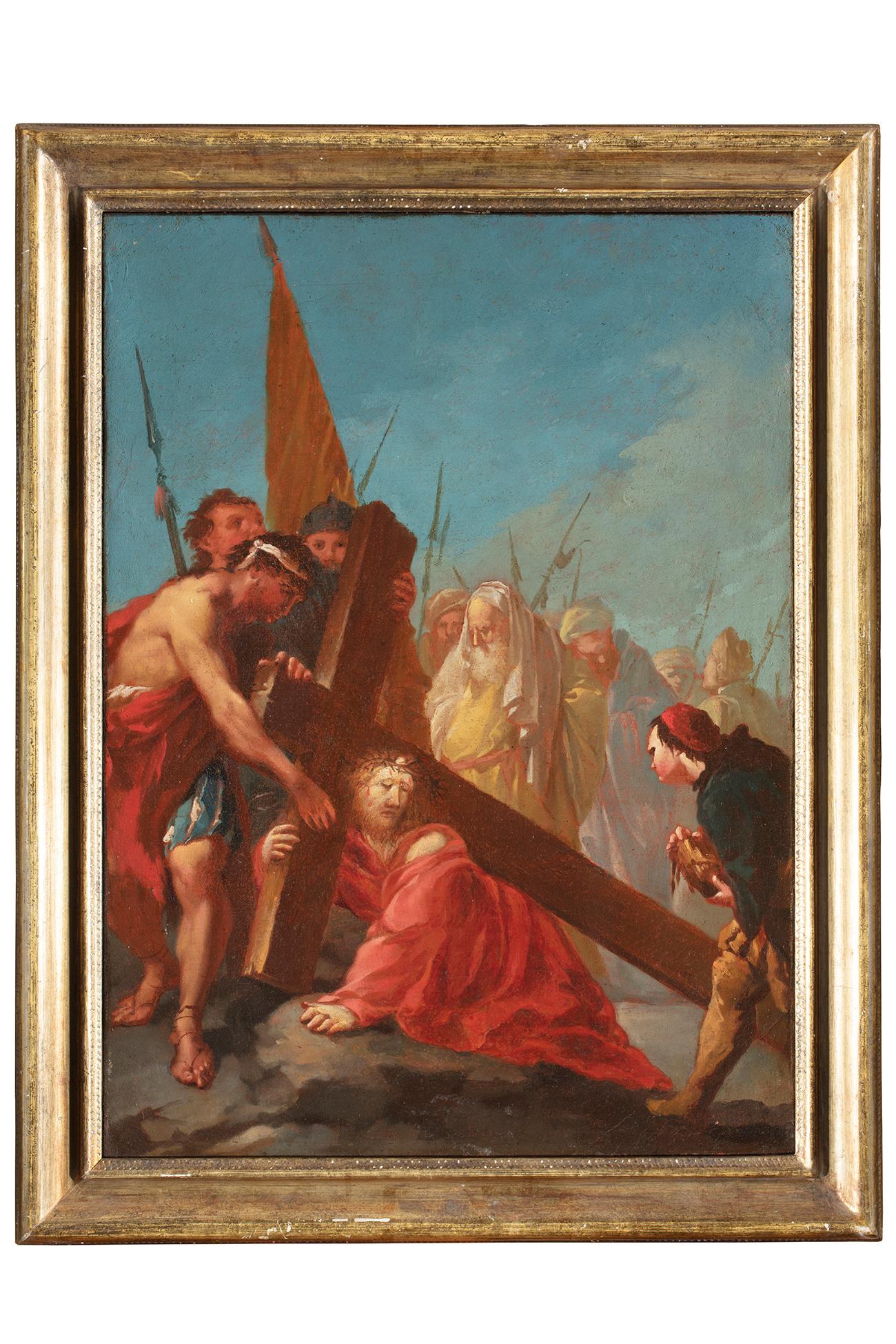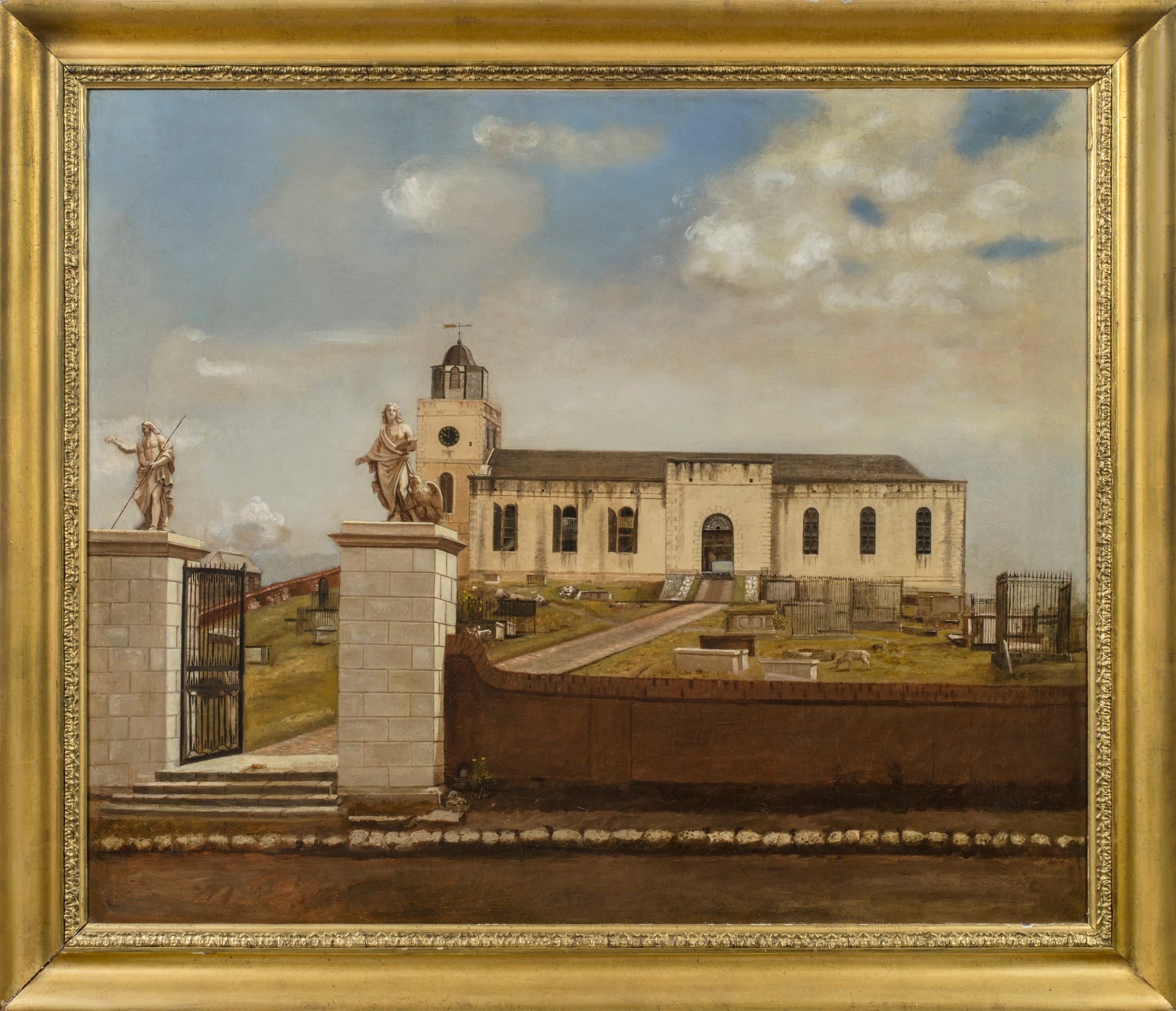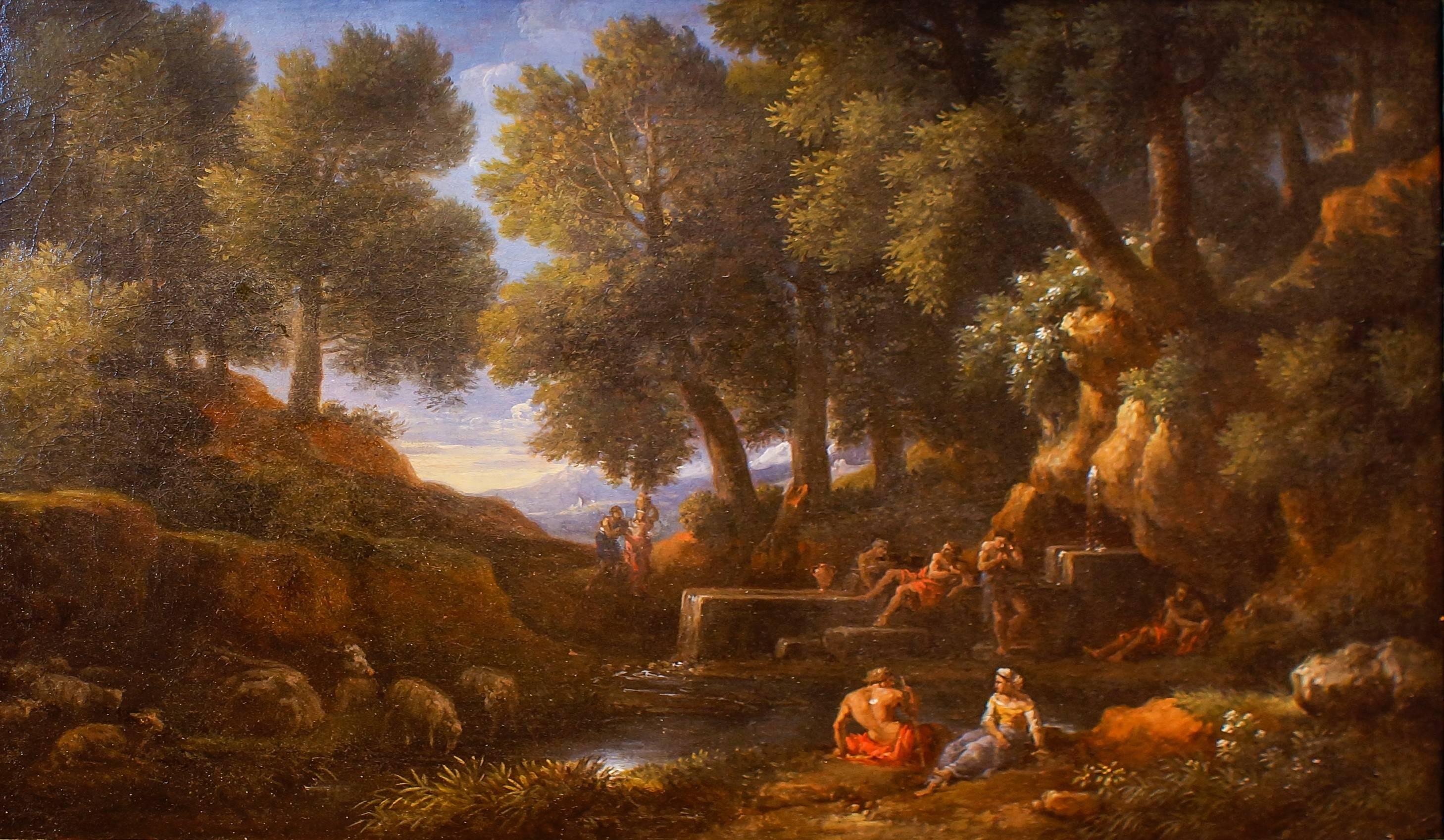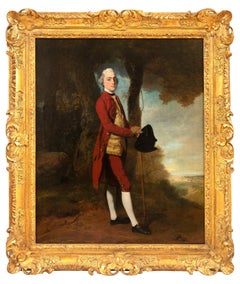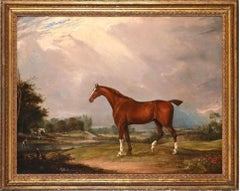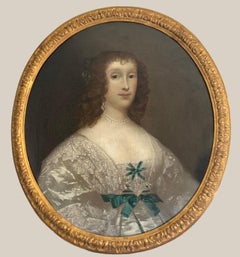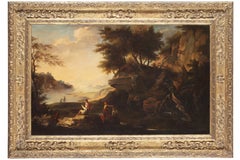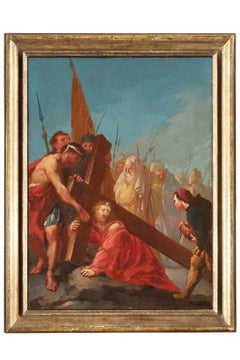Items Similar to A pair of 18th century Italian landscapes with classical ruins and figures
Want more images or videos?
Request additional images or videos from the seller
1 of 8
A pair of 18th century Italian landscapes with classical ruins and figurescirca 1750
circa 1750
About the Item
A pair of 18th century Italian landscapes with classical ruins and figures, circa 1750.
Circle of Giovanni Panini (1691-1765)
Thomas Agnew and Sons, London, labels on the reverse
Each oil on canvas, 60 x 103cm (23 x 40in), in period giltwood frames
Provenance:
A F Marreco, Weidenfeld & Nicolson, 2 Cork Street, London
Sold by Thomas Agnew and Sons, Bond Street, London in 1957 as 'Panini'.
Giovanni Paolo, also known as Gian Paolo Panini or Pannini (17 June 1691 – 21 October 1765), was an Italian painter and architect who worked in Rome and is primarily known as one of the ‘vedutisti’ (view painters). As a painter, Panini is best known for his vistas of Rome, in which he took a particular interest in the city’s antiquities. Among his most famous works are his view of the interior of the Pantheon and his vedute—paintings of picture galleries containing views of Rome. Most of his works, especially those of ruins, have a fantasy element of embellishment, characteristic of capriccio themes where the artist draws on his imagination to group together decorative ruins, unlikely to be found in such close proximity in reality.
These paintings were very popular ‘Grand Tour’ souvenirs for wealthy tourists in the 18th century, allowing them to capture many of their favourite architectural sites combined into an impressive painting which they could take home and prominently display in their grand country homes.
.
- Creation Year:circa 1750
- Dimensions:Height: 23.63 in (60 cm)Width: 40.56 in (103 cm)
- Medium:
- Movement & Style:
- Circle Of:Giovanni Paolo Panini (1691 - 1765, Italian)
- Period:
- Condition:
- Gallery Location:Bath, GB
- Reference Number:1stDibs: LU95214004762
About the Seller
5.0
Vetted Professional Seller
Every seller passes strict standards for authenticity and reliability
Established in 2002
1stDibs seller since 2015
37 sales on 1stDibs
Associations
The British Antique Dealers' AssociationLAPADA - The Association of Arts & Antiques DealersInternational Confederation of Art and Antique Dealers' Associations
- ShippingRetrieving quote...Shipping from: Bath, United Kingdom
- Return Policy
Authenticity Guarantee
In the unlikely event there’s an issue with an item’s authenticity, contact us within 1 year for a full refund. DetailsMoney-Back Guarantee
If your item is not as described, is damaged in transit, or does not arrive, contact us within 7 days for a full refund. Details24-Hour Cancellation
You have a 24-hour grace period in which to reconsider your purchase, with no questions asked.Vetted Professional Sellers
Our world-class sellers must adhere to strict standards for service and quality, maintaining the integrity of our listings.Price-Match Guarantee
If you find that a seller listed the same item for a lower price elsewhere, we’ll match it.Trusted Global Delivery
Our best-in-class carrier network provides specialized shipping options worldwide, including custom delivery.More From This Seller
View AllAn English 18th century portrait of James Stanley, standing in a landscape
By John Hamilton Mortimer
Located in Bath, Somerset
Portrait of James Stanley (1750 - 1810), circa 1775-1778, full-length, wearing a red coat and breeches and a gold embroidered waistcoat, hold...
Category
1770s English School Portrait Paintings
Materials
Canvas, Oil, ABS
English early 19th century painting of a chestnut hunter in a landscape
By John Ferneley Senior
Located in Bath, Somerset
A painting of a chestnut hunter in a landscape with a horse and rider accompanied by two hounds by a woodland river in the distance.
Signed and inscribed 'Melton Mowbray', lower left.
Oil on canvas in a giltwood frame.
John Ferneley Sr (1782-1860) was born the son of a Leicestershire wheelwright, the youngest of six children. He is known as one of the great British equine artists, perhaps only second to Stubbs in terms of raw ability.
Ferneley originally worked with his father, until by chance the Duke of Rutland saw some of his work on the side of a cart on which Ferneley and his father had been working. The Duke was so impressed with Ferneley that he persuaded John's father to allow him to become the pupil of Benjamin Marshall. Ferneley was so talented that apparently he produced almost perfect copies of his tutor's paintings and they were said to have been indistinguishable from the master’s. Marshall also enrolled him as a student of the Royal Academy Schools.
In 1804 Ferneley paid a man named Thomas Harrison...
Category
Early 19th Century English School Animal Paintings
Materials
Canvas, Oil
19th century English School, Bay Horse and a Terrier in a Landscape
Located in Bath, Somerset
A bay hunter and a black and white short haired dog (possibly a bull terrier) in an extensive English landscape. a rustic barn in the near distance. Indistinctly signed 'Br...' and d...
Category
Early 19th Century English School Animal Paintings
Materials
Canvas, Oil
$9,233 Sale Price
20% Off
17th century portrait of lady in an ivory silk gown and lace collar
By Cornelius Johnson
Located in Bath, Somerset
Circle of Cornelius Johnson (1593-1661), a 17th century portrait of a lady, bust-length oval, wearing an ivory silk gown with blue silk bows and lace c...
Category
Early 17th Century Old Masters Portrait Paintings
Materials
Oil, Canvas
$16,295 Sale Price
25% Off
17th century Dutch portrait of a Lady in Red adorned with Pearls
By Pieter Nason
Located in Bath, Somerset
Portrait of a lady, half-length in a feigned oval wearing a ruby coloured silk gown holding entwined strings of pearls across her bodice. Signed 'PNason' and dated 1667 (lower right)...
Category
17th Century Old Masters Portrait Paintings
Materials
Oil, Canvas
$26,072 Sale Price
20% Off
English 17th century portrait of James Thynne as a young boy by a fountain
By Johann Kerseboom
Located in Bath, Somerset
Portrait of the Hon. James Thynne (c. 1680-1704), full-length, in the gardens of Longleat House, seated beside a fountain, holding a shell beneath water spouting from a horn blown by a cherub on a dolphin. A glimpse of part of Longleat House can be seen upper left. Oil on canvas in a period giltwood frame, decorated with leaves and acorns. C. 1682.
Dimensions: 145 x 123cm (57 x 48in) in frame
Provenance:
Ex Longleat House, Wiltshire
Private collection, Bath
James Thynne was the youngest son of Thomas Thynne, 1st Viscount Weymouth and Frances Finch of Longleat House, Wiltshire. He died in his youth and his Aunt, Anne Kingsmill Finch, Countess of Winchilsea (1661-1720), wrote a moving poem on his death. He was buried in the family vault at Longbridge Deverill, Wiltshire. A mezzotint of this painting by William Faithorne the Younger is held in the Royal Collection.
Johann Kerseboom (d.1708) was the nephew of Frederick Kerseboom and first worked in Germany before coming to England in the 1680's where his sitters included the 'Electress Sophia Dorothea' (known from a mezzotint by William Faithorne). His early works were influenced by William Wissing...
Category
17th Century Old Masters Portrait Paintings
Materials
Oil, Canvas
$26,072 Sale Price
20% Off
You May Also Like
17th Century by Jacob de Heusch Pair of Landscapes Oil on Canvas
Located in Milano, Lombardia
Jacob De Heusch (Utrecht, Netherlands, 1657 – Amsterdam, Netherlands, 1701)
Title: Pair of Landscapes
Medium: Oil on canvas
Dimensions: without frame 50 x 8...
Category
17th Century Old Masters Landscape Paintings
Materials
Canvas, Oil
18th Century Neoclassical Oil Painting of the Trojan War: Briseis & Achilles
By James Thornhill
Located in London, GB
James Thornhill (1674-1735)
Oil on canvas
12 x 14 inches;
16 ½ x 18 ½ in. Inc. frame
The subject matter and inclusion of herms on both sides shows the influence of Louis...
Category
Early 18th Century Old Masters Figurative Paintings
Materials
Oil, Canvas
Shepherd with Sheep, Cows and a Goat in a Landscape by Jan Frans Soolmaker
Located in Stockholm, SE
Jan Frans Soolmaker (Flanders 1635‑1685)
Shepherd with Sheep, Cows and a Goat in a Landscape
oil on relined canvas
canvas size 56 x 53 cm
frame i...
Category
17th Century Old Masters Animal Paintings
Materials
Oil, Canvas
$5,658 Sale Price
25% Off
Free Shipping
18th Century By Giustino Menescardi Ascent to Calvary Oil on Canvas
Located in Milano, Lombardia
Giustino Menescardi (Milan, Italy, c. 1720 - Venice, Italy, after 1779)
Title: Ascent of Calvary
Medium: Oil on canvas
Dimensions: without frame 47 x 36 cm - with frame 57 x 43 cm
Shaped and gilded wooden cassetta frame
Publications:
Bozzetti, modelletti, sketches: dalla collezione di Giorgio Baratti...
Category
Early 18th Century Old Masters Landscape Paintings
Materials
Cotton Canvas, Canvas, Oil
View of St. John’s Cathedral, Antigua
Located in New York, NY
Provenance:
Robert Hollberton, Antigua, ca. 1841
Private Collection, New York
The present painting depicts Old St. John’s Cathedral on the island of Antigua. The church was erected in the 1720s on the designs of the architect Robert Cullen. It measured 130 feet by 50 feet with north and south porches 23 x 20 ½ feet. The tower, 50 feet high with its cupola, was added in 1789. The church was elevated to the status of a cathedral, but disaster struck in the form of an earthquake that destroyed the building on 8 February 1843. A memorandum of that date relates the event:
“On Wednesday, 8th February, 1843, this island was visited by a most terrific and destructive earthquake. At twenty minutes before eleven o’clock in the forenoon, while the bell was ringing for prayers, and the venerable Robert Holberton was in the vestry-room, awaiting the arrival of persons to have their marriage solemnized, before the commencement of the morning service, the whole edifice, from one end to the other, was suddenly and violently agitated. Every one within the church, after the first shock, was compelled to escape for his life. The tower was rent from the top to the bottom; the north dial of the clock precipitated to the ground with a dreadful crash; the east parapet wall of the tower thrown upon the roof of the church; almost the whole of the north-west wall by the north gallery fell out in a mass; the north-east wall was protruded beyond the perpendicular; the altar-piece, the public monument erected to the memory of lord Lavington, and the private monuments, hearing the names of Kelsick, Warner, Otley, and Atkinson, fell down piecemeal inside; a large portion of the top of the east wall fell, and the whole of the south-east wall was precipitated into the churchyard, carrying along with it two of the cast-iron windows, while the other six remained projecting from the walls in which they had been originally inserted; a large pile of heavy cut stones and masses of brick fell down at the south and at the north doors; seven of the large frontpipes of the organ were thrown out by the violence of the shock, and many of the metal and wooden pipes within displaced; the massive basin of the font was tossed from the pedestal on which it rested, and pitched upon the pavement beneath uninjured. Thus, within the space of three minutes, this church was reduced to a pile of crumbling ruins; the walls that were left standing being rent in every part, the main roof only remaining sound, being supported by the hard wood pillars.”
The entrance from the southern side into the cathedral, which was erected in 1789, included two imposing statues, one of Saint John the Divine and the other of Saint John the Baptist in flowing robes. It is said that these statues were confiscated by the British Navy from the French ship HMS Temple in Martinique waters in 1756 during the Seven Years’ War and moved to the church. The statues are still in situ and can be seen today, much as they appeared in Bisbee’s painting, but with the new cathedral in the background (Fig. 1).
Little is known of the career of Ezra Bisbee. He was born in Sag Harbor, New York in 1808 and appears to have had a career as a political cartoonist and a printmaker. His handsome Portrait of President Andrew Jackson is dated 1833, and several political lithographs...
Category
19th Century Old Masters Landscape Paintings
Materials
Oil, Canvas
Wooden Landscape with Shepherds, Fountain and Flock - by Jan Frans van Bloemen
By Jan Frans van Bloemen (Orizzonte)
Located in Roma, IT
Bibliography:
A.Busiri Vici, Jan Frans Van Bloemen Orizzonte e l’origine del paesaggio romano settecentesco, Ugo Bozzi Editore, Roma 1974, n.41
This artwork is shipped from Italy. U...
Category
18th Century Old Masters Landscape Paintings
Materials
Canvas, Oil
Recently Viewed
View AllMore Ways To Browse
Pair Of Italian Paintings
Pair Italian Figures
Italian Ruins Painting
Italy Ruins Painting
Pair Of Italian Oil Paintings
Picture Frame Embellished
18th Ruins Painting
Italian Capriccio
Capriccio Painting
Paired Giltwood Oil Painting
Pair Of 18th Century Italian Oil Paintings
Capriccio Painting Italy
18th Century Capriccio
Paintings Panini
Giovanni Paolo Panini
Pair Italian Grand Tour Paintings
Circle Of Panini
Painting Of Classical Ruins Paintings Circle Of Panini
